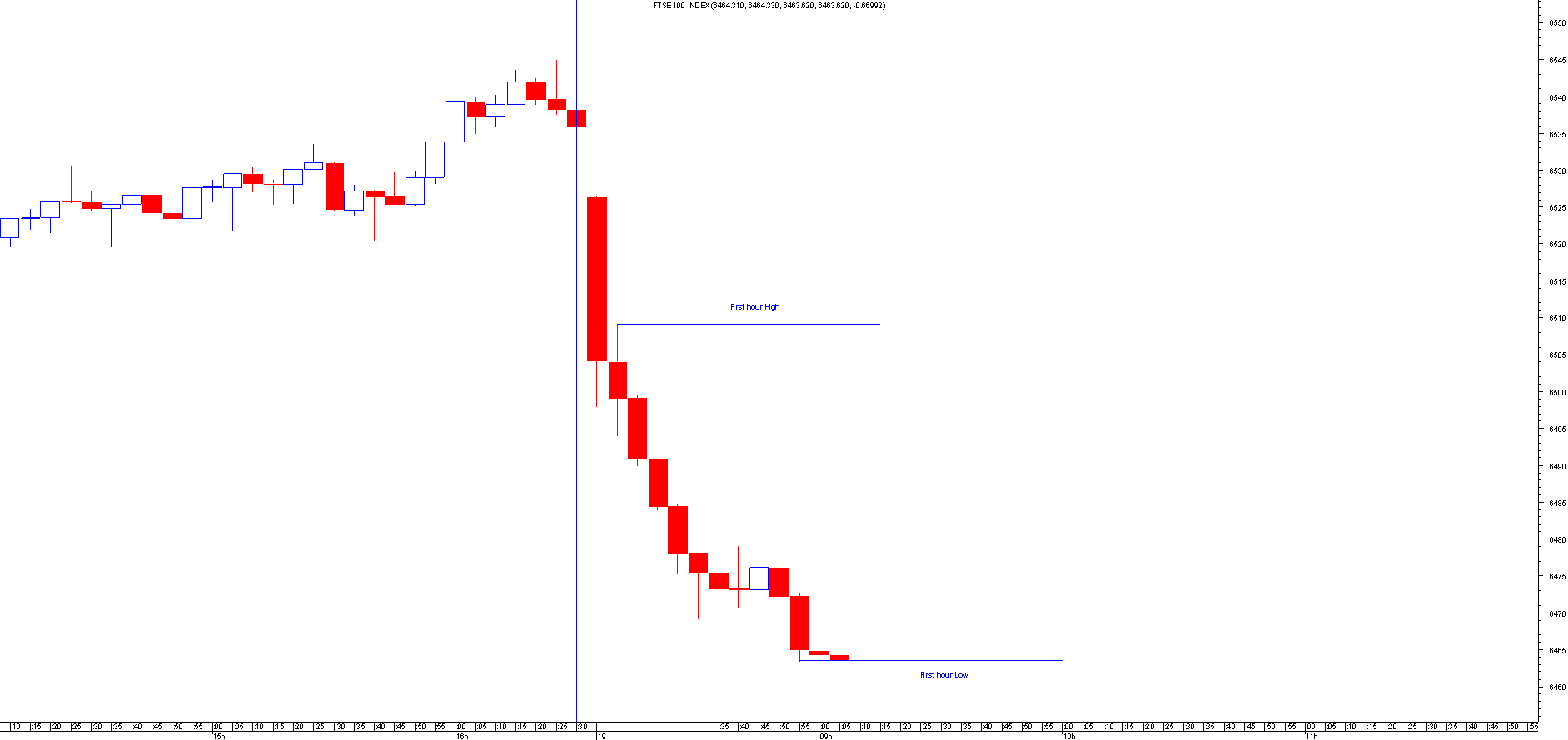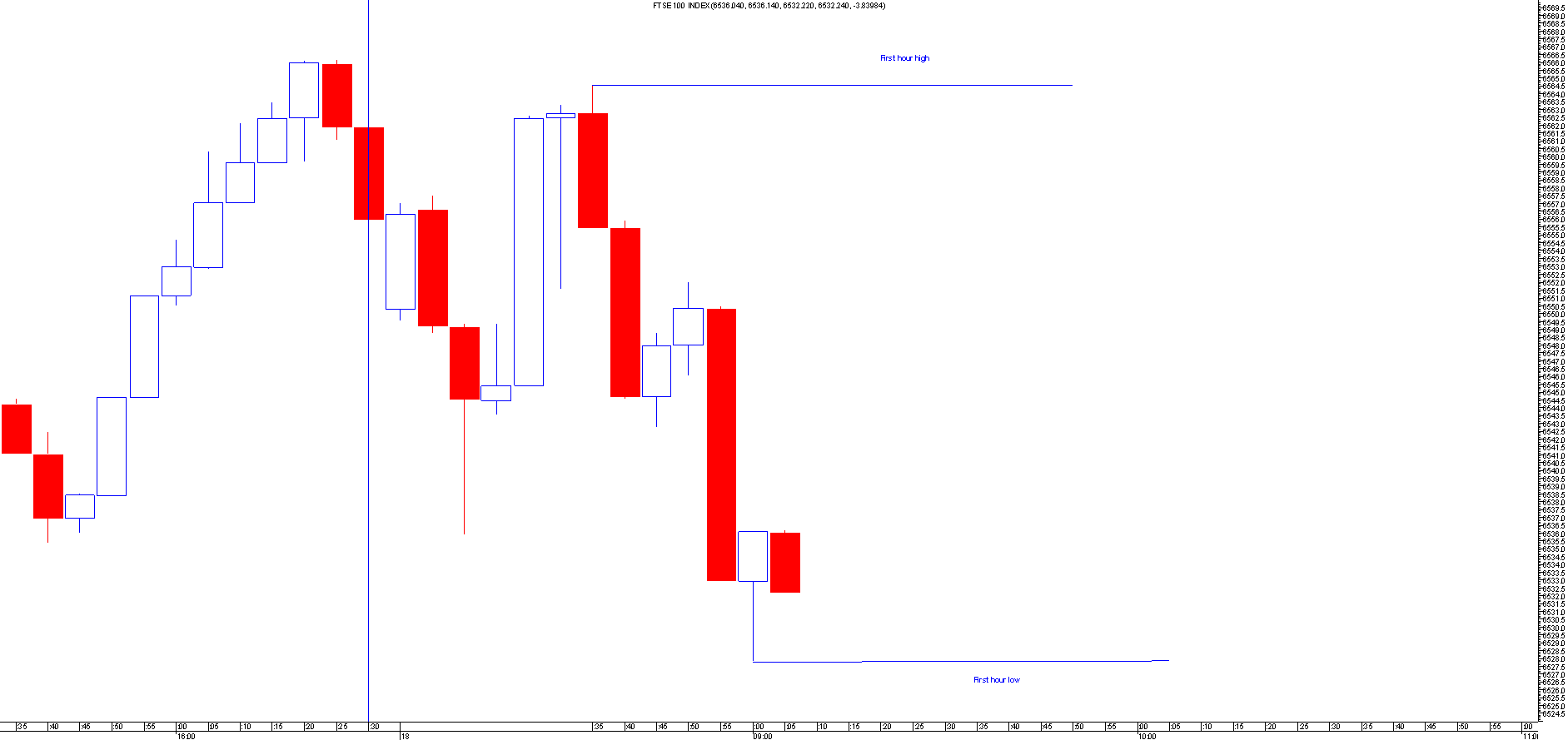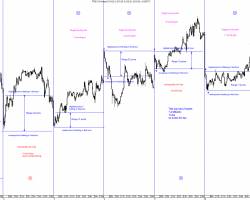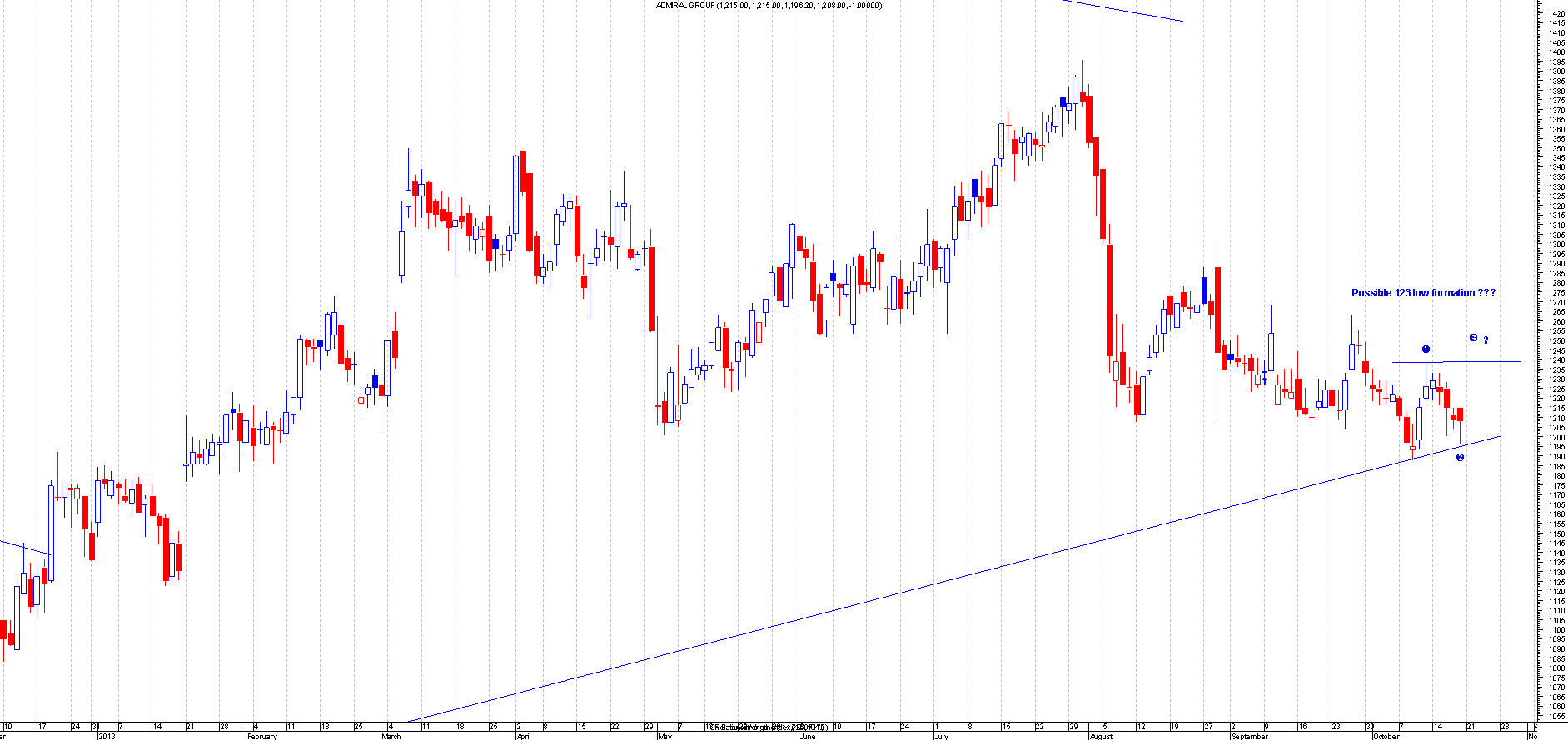Big Picture Options
in ChartsView Blog:- Font size: Larger Smaller
- Hits: 8755
- 0 Comments
- Subscribe to this entry
- Bookmark

Following on from the comments on the last post, I thought it would be a good idea to have a reminder of the 2 main wave options going forward. Most of the recent discussion has focused on short term, small-ish price movement possibilities so some context might be good.
I've done both of these charts in log scale which shows percentage change rather than pure price change. This is so that we can see the relative size of waves of same and varying degree.
The first chart above shows the possibility of the whole post-203p move as being a running flat. These are rare and feature a wave B which ends substantially above the starting point of wave A and C ends above the end of A. They occur in exceptionally strong trends but even then there are very few examples of them.
The far more common type of flat correction where wave B ends higher than the start of wave A is an expanded flat. [NB the term "flat" refers to any corrective pattern which has the sub-wave structure 3-3-5] In this case, the norm would be for wave C (the end of P2 in this case) to end substantially below the end of wave A so we'd be looking at a low comfortably below 87p here before Primary wave 3 could start.
I've done both of these charts in log scale which shows percentage change rather than pure price change. This is so that we can see the relative size of waves of same and varying degree.
The first chart above shows the possibility of the whole post-203p move as being a running flat. These are rare and feature a wave B which ends substantially above the starting point of wave A and C ends above the end of A. They occur in exceptionally strong trends but even then there are very few examples of them.
The far more common type of flat correction where wave B ends higher than the start of wave A is an expanded flat. [NB the term "flat" refers to any corrective pattern which has the sub-wave structure 3-3-5] In this case, the norm would be for wave C (the end of P2 in this case) to end substantially below the end of wave A so we'd be looking at a low comfortably below 87p here before Primary wave 3 could start.

The chart on the left shows the other main alternative which happens to be my preference, not because it's what I want to happen but because, to me, it's far more likely.
Here we have Primary wave 2 ending at the 87p low which was somewhere in between the 50% and 61.8% Fibs of the 4.5p to 203p move which is exactly what we'd expect from a wave 2.
We then have the move from 87p to 450p as Intermediate wave 1 of Primary wave 3. One reason why I favour this count is that the scale of that I1 of P3 move is almost exactly the same as I1 of P1 from 4.5p to 21.5p. This option would require that I2 of P3 ends no lower than 87p but in a "normal" case it really ought to have ended at around the 225p mark which was the 61.8% Fib. It has to be said that given how far this retrace has already come, a full retrace back to 87p cannot be ruled out.
The best way to try to determine which of these options is more likey is to analyse the 87p to 450p move as a different form would be required in each case. In the former count, that move would consist of 3 sub-waves, in the latter it would have 5. I've discussed this in some detail with other people whose knowledge of EWT I have a great deal of respect for and we could not agree or come to a definitive answer on this issue.
In both of the above cases, once the low has been established, the next move up would be very powerful. There is one other option which is that 4.5p to 450p was a whole 3 wave corrective move against a larger degree trend downwards. Clearly that would require a new low below 4.5p to continue the trend but I'm largely discounting that option
Trackback URL for this blog entry.






